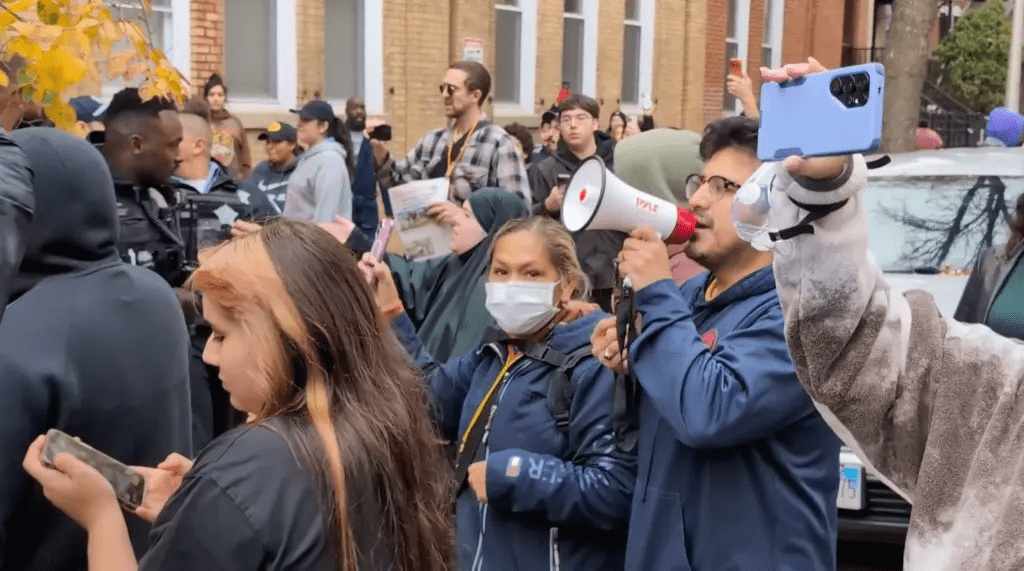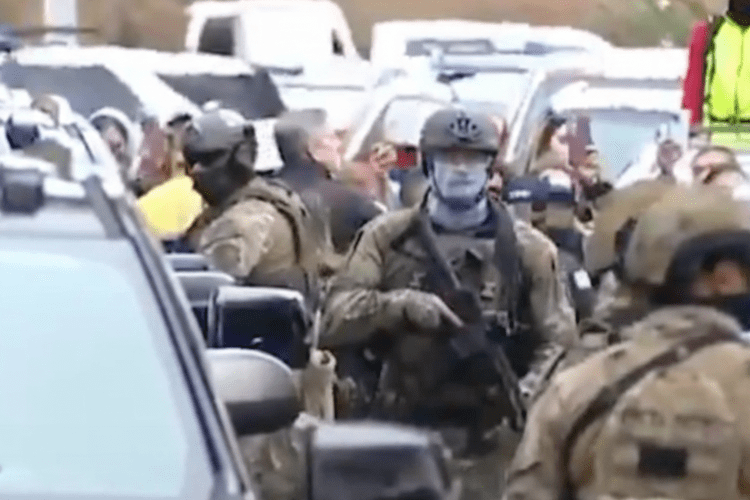“Chaos in Little Village: Shooter Targets Border Patrol Agents During Chicago Immigration Operation, Bricks and Paint Cans Hail the Aftermath”
A tense scene unfolded on Saturday in Chicago’s Little Village neighborhood when a man behind the wheel of a black Jeep allegedly opened fire at agents from the U.S. Border Patrol as they conducted an immigration-enforcement operation. The incident, confirmed by the U.S. Department of Homeland Security (DHS), adds to a troubling trend of increasing assaults on federal law-enforcement officers during immigration crackdowns.
At approximately midday, agents were operating near the intersection of 26th Street and Kedzie Avenue when the man—driving the Jeep—allegedly fired shots in their direction before speeding off. DHS reported that flares of violence also erupted in the immediate aftermath: bystanders threw a paint can and bricks at the agents’ vehicles, prompting the local Chicago Police Department to arrive and clear the scene.
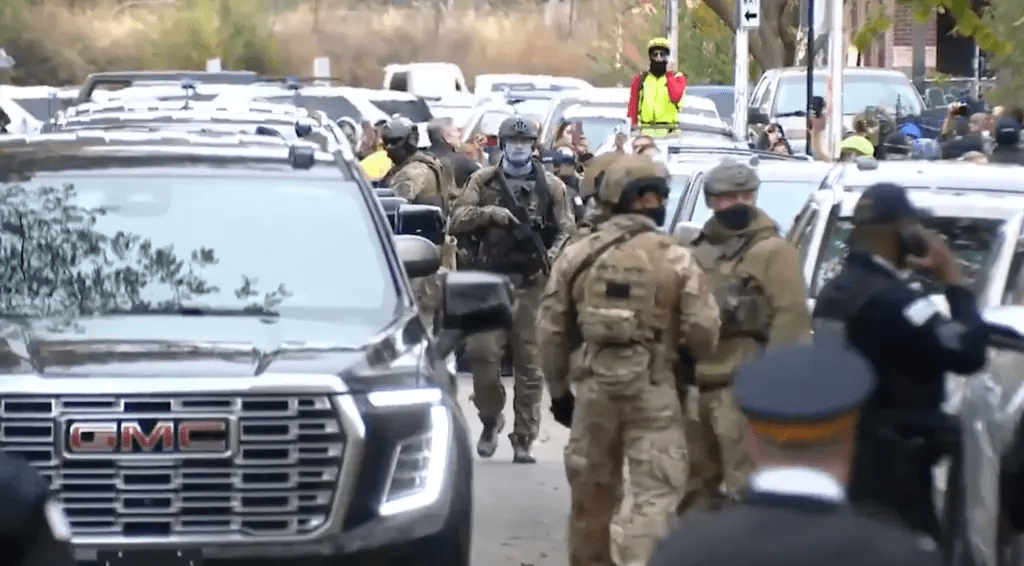
The situation has inflamed local tensions. Little Village, a predominantly Latino neighborhood on Chicago’s West Side, has become ground zero for the federal initiative dubbed Operation Midway Blitz—a sweeping enforcement action launched in the city earlier this year under the Donald Trump-era immigration agenda. DHS leadership now points to this event as emblematic of a broader escalation of hostility toward immigration agents. “This incident is not isolated and reflects a growing and dangerous trend of violence and obstruction,” the agency said in a social-media post.
Federal agents say that they were met with mounting resistance as they executed their operation, describing their work as increasingly perilous. The Jeep driver remains at large; no arrests have been reported, and law-enforcement sources say the investigation is ongoing.

From the neighborhood vantage point, the scene painted a portrait of chaos. Local residents described large crowds forming around the federal vehicles, aggression escalating quickly, and dozens of agents manoeuvring through a sea of vehicles and onlookers. Video released by news outlets and posted on local social platforms shows heavy-duty federal vehicles, agents in tactical gear, and moments of visible alarm. One witness told CBS Chicago that he heard four or five gunshots followed by the rumble of the Jeep as it turned onto a nearby street.

The timing and location of the incident carry political significance. The Little Village operation occurred only two months after the launch of Operation Midway Blitz in the Chicago area, which aimed to target undocumented immigrants with criminal records. The initiative has provoked protest and resistance, and this weekend’s shooting reflects both the stakes of that enforcement push and the potential backlash.
Local political leaders responding to the shooting voiced concern and frustration. Chicago Alderman Michael Rodriguez of the 22nd Ward took to social media, claiming that federal agents were operating without proper coordination with city officials and were creating fear in the community. He accused them of “doing things that are unconstitutional, that are illegal,” and said the safety of residents must be prioritized.
Meanwhile, the DHS statement emphasised the rising threat faced by its workforce. “Over the past two months, we’ve seen an increase in assaults and obstruction targeting federal law-enforcement during operations,” it said, urging that the aggression toward law-enforcement must end for the safety of everyone.
What remains uncertain is the motive of the shooter. At this stage the driver’s identity, whether the attack was planned, and what precipitated the shooting are still under investigation. The fact that bricks and a paint can followed the gunfire suggests a larger crowd confrontation, but FBI and local detectives are treating the Jeep driver’s action as the primary act of violence. The Chicago Police Department has not released further comment beyond confirming the operation and cooperating with federal agencies.

From a broader lens, this episode raises questions about the balance between enforcement of immigration law and ensuring public-safety oversight. For supporters of the federal crackdown, it underscores the peril agents face and strengthens the case for reinforced staffing, tactical resources and legal protection. For critics, it spotlights the risks of conducting heavy-duty enforcement operations in densely-populated, politically charged neighbourhoods without adequate community engagement and transparency.
As investigations deepen, several potential outcomes could emerge. Federal law-enforcement may increase its presence and tactic-adjustments, possibly deploying more armoured vehicles or partnering with local agencies. Officials may also revisit the rules for engagement in urban enforcement settings, particularly in immigrant-rich neighbourhoods. On the community side, the incident could fuel further protest and resistance, especially if footage or more details emerge that show contentious use of force or other irregularities.
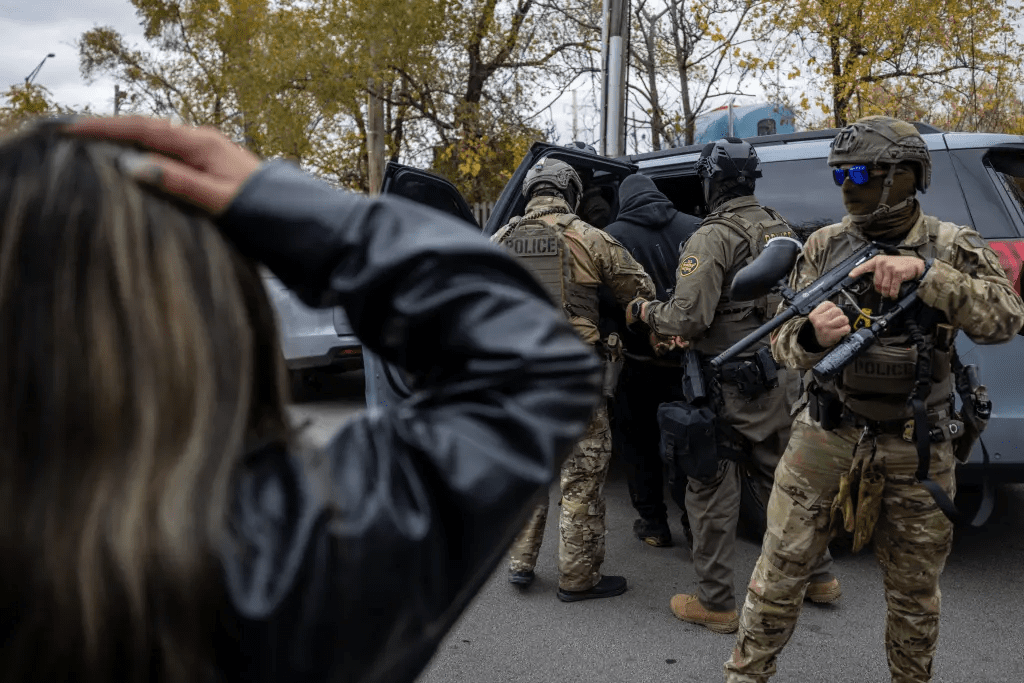
One consequence already clear: this event will likely become a focal point in the ongoing debate over immigration enforcement, oversight, and urban policing. It may affect future legislation in Illinois and at the federal level, and it will certainly shape the narrative around enforcement in Chicago and similar cities. As tensions persist, the line between law-enforcement operations and community friction becomes ever more contested.
For the residents of Little Village, the afternoon will be remembered as a moment when federal operations and street confrontation collided. Homes, families and neighbourhoods were momentarily thrust into a high-stakes encounter where bullets and thrown objects broke out near local residents who were going about their day. Whether the broader policy debates will fully register here immediately remains uncertain, but the incident will not be forgotten.
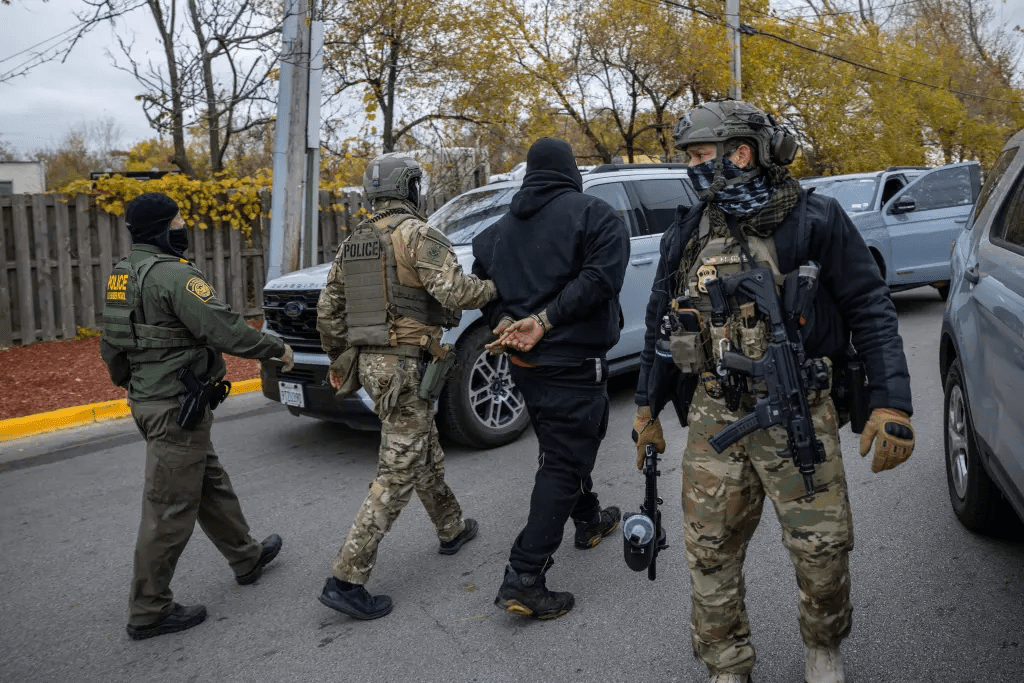
As the story develops, more definitive facts—such as the shooter’s identity, motive, and whether community-based provocations preceded the attack—will come to light. For now the incident stands as a stark reminder of how enforcement initiatives, community dynamics and volatile confrontation can converge in one West-Side neighbourhood of America’s third-largest city.
